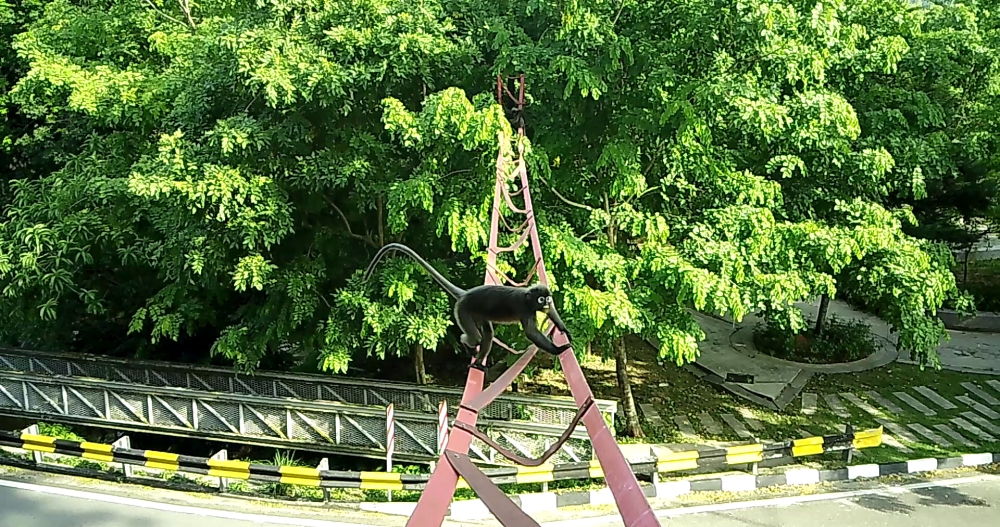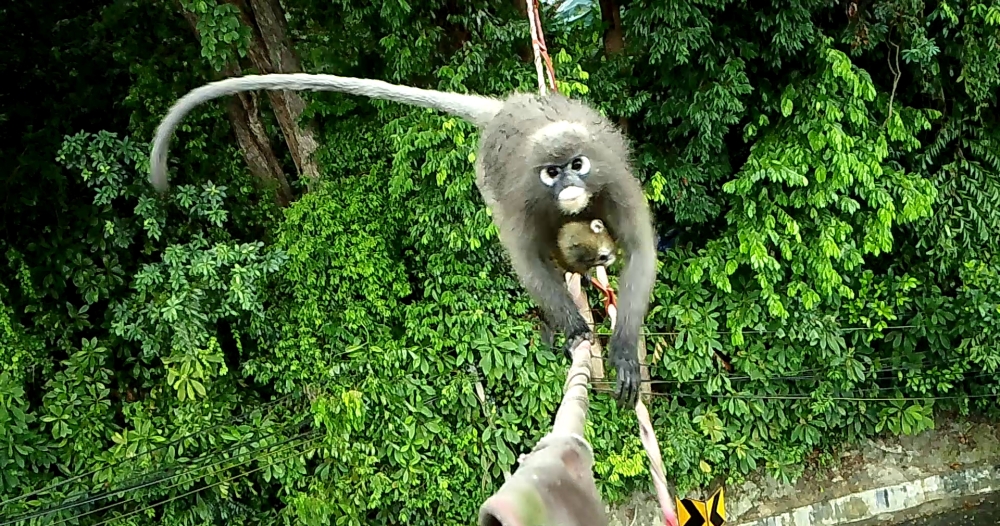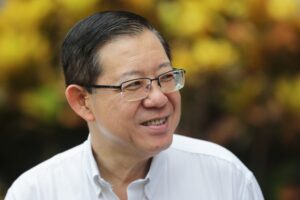GEORGE TOWN, Sept 9— Strung across the busy road along Jalan Lembah Permai in Tanjung Bungah, a red canopy bridge made especially for wildlife to cross the road was barely discernible to drivers.
Located about six metres high and spanning 12 metres across the road, the bridge — named Numi’s Crossing — is the second bridge built by Langur Project Penang (LPP).
LPP’s founder Yap Jo Leen said Numi’s Crossing is the third prototype they have made to allow wildlife to safely cross the road.
“We tried two different prototypes for Ah Lai’s Crossing and Numi’s Crossing is the third prototype,” she said.
She said that the first bridge, Ah Lai’s Crossing in Teluk Bahang, was the result of two earlier prototypes installed on February 28, 2019 and August 19, 2020 respectively.
Numi’s Crossing, made from recycled fire hoses, was installed in February last year as the third prototype while remaining the second bridge under the project.
Yap was conducting research on the dusky langurs for her Master’s and PhD more than six years ago when the idea for installing Ah Lai’s Crossing came about.
She had wanted to install a bridge for the dusky langurs to safely cross the busy road.
“We have to make sure the bridges are portable so that we can reuse it and switch locations if we find that a bridge is no longer used by wildlife,” she said.

Numi’s Crossing along Jalan Lembah Permai is six metres high and spans 12 metres across the road. — Picture by Opalyn Mok
The bridges are supported by steel poles that can be removed and reused elsewhere.
However, since installing the bridges, she said they were not only used by the dusky langurs but also by a myriad of other wildlife.
“There are up to nine different species using it to cross the road such as the musang, the Sunda slow loris, the green-crested lizard, squirrels and birds used it as a perch,” she said.
She said the locations of the bridges were selected based on scientific data that identified those areas as hotspots for crossing by wildlife.
“For every location we selected, it is backed by a year of research on the habits of the monkeys in the area,” she said.
Now, LPP is working on building a third bridge along Batu Ferringhi, somewhere between Ah Lai’s Crossing and Numi’s Crossing.
Yap said they chose to build another bridge along the same route as the first two as a way of continuing the project.
“The bridges are more than just a safe wildlife crossing,” she said.
She said each bridge has a different objective in serving a bigger purpose.
“For example, Ah Lai’s Crossing started as part of my project as a student back then but once the bridge was built, it inspired and empowered a lot of people to join us as citizen scientists,” she said.
Although initially the bridge was to help one family of dusky langurs to cross the road, it is now used by two groups of dusky langurs and two groups of long-tailed macaques, alongside other species.

A dusky langur using Numi’s Crossing in Tanjung Bungah. — Picture courtesy of Langur Project Penang
As for the third bridge that will be installed this December, Yap said the location is a popular eco-tourism site.
“Other than serving as a wildlife crossing, it will also serve as a tool for environmental education to highlight responsible human-wildlife interaction,” she said.
LPP is a citizen science-driven outreach and primate conservation enterprise that focuses on the ecology, behaviour and road ecology of urban monkeys.
Yap said their aim is to develop recommendations for humane and sustainable strategies to promote coexistence between humans and non-human primates through their projects.
LPP currently has ongoing projects, an environmental education outreach programme, wildlife conservation through the installation of the bridges and a citizen scientist programme that is open to anyone to join.





